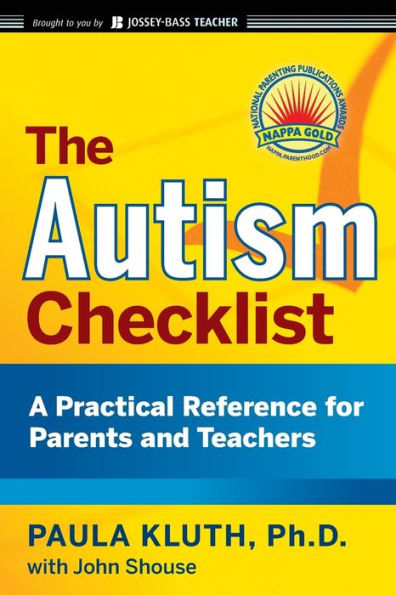Table of Contents
Acknowledgments ix
About the Authors xi
Introduction xiii1. Basic Information on Autism and Asperger Syndrome 1
Introduction 2
1.1. What We Know About Autism 5
1.2. What Do We Mean by the Autism Spectrum? 7
1.3. Conditions Commonly Associated with Autism 9
1.4. Positive Traits Associated with Autism 10
1.5. Early Indicators of Autism 12
1.6. Autism Myths Versus Autism Facts 15
1.7. Tools Used in Autism Screening and Diagnosis 19
1.8. Social Differences 24
1.9. Communication Differences 27
1.10. Movement Differences 30
1.11. Sensory Differences and Sensitivity 33
1.12. Passions, Interests, and Rituals 36
2. Checklists for Parents 39
Introduction 40
2.1. After Diagnosis 42
2.2. Sharing the News 44
2.3. Help for Families 46
2.4. What Those on the Spectrum Need at Home 48
2.5. Modifying the Home 51
2.6. Safety at Home 53
2.7. Safety in the Community 56
2.8. Adaptations at Family Events 59
2.9. Adaptations for Errands and Outings 61
2.10. Adaptations While Traveling 63
2.11. Helping Your Child Learn at Home 66
2.12. Advocating for Your Child 70
3. Checklists for Teachers 75
Introduction 77
3.1. What to Do If You Think a Student Is on the Spectrum 79
3.2. Needs of Students with Autism 81
3.3. Helpful Habits of Mind for Teachers 83
3.4. Learning About Autism 86
3.5. Encouraging Self-Advocacy 89
3.6. Addressing Student Fascinations and Passions in the Classroom 91
3.7. Supporting Students Who Seek Perfection 94
3.8. Supporting Students Who Resist or Refuse to Do Work 96
3.9. Helping Students Cope with Anxiety 98
3.10. Building a Supportive Classroom Community 100
3.11. Creating a Comfortable Classroom 103
3.12. Giving Clear Directions in the Classroom 110
3.13. Providing Structure in the Classroom 112
3.14. Creating Lessons with Students with Autism in Mind 115
3.15. Creating More Accessible Whole-Class Discussions and Lectures 118
3.16. Creating Assessments Appropriate for Students with Autism 120
3.17. Supports and Strategies for Literacy Lessons 124
3.18. Supports and Strategies for Math Lessons 129
3.19. Helping Students Manage Homework 132
3.20. Making Within-School Transitions Easier for Students 135
3.21. Making School-to-School Transitions Easier for Students 137
3.22. Preventing Behavior Struggles in the Classroom 139
3.23. Don’ts for Working with Students with Autism 142
3.24. Helping Students with Autism Shine 144
4. More Helpful Strategies for Home and School 147
Introduction 148
4.1. To Keep in Mind for Toddlers and Preschoolers 150
4.2. To Keep in Mind for School-Age Children 152
4.3. To Keep in Mind for Adolescents and Teenagers 154
4.4. Possible Members of a Support Team 158
4.5. Strategies for Encouraging and Facilitating Communication 160
4.6. Strategies for Supporting Those Without Reliable Communication 164
4.7. Strategies for Encouraging and Supporting Social Relationships 168
4.8. Strategies for Building Social Skills 171
4.9. Addressing Movement Differences 173
4.10. Addressing Sensory Issues: Visual 177
4.11. Addressing Sensory Issues: Tactile 179
4.12. Addressing Sensory Issues: Auditory 181
4.13. Addressing Sensory Issues: Olfactory 183
4.14. Strategies for Teaching and Learning 185
4.15. Promoting and Teaching Organization 187
4.16. Helping Those on the Spectrum Cope with Change 190
4.17. Addressing Challenging Behavior 192
4.18. Strategies for Coping in Crisis 194
5. Helpful Resources for Parents and Teachers 197
Introduction 198
5.1. Recommended Videos 200
5.2. Recommended Books 202
5.3. Recommended Web Sites 210
5.4. Recommended Vendors 220
5.5. Recommended Organizations 225
References 229
Index 231



